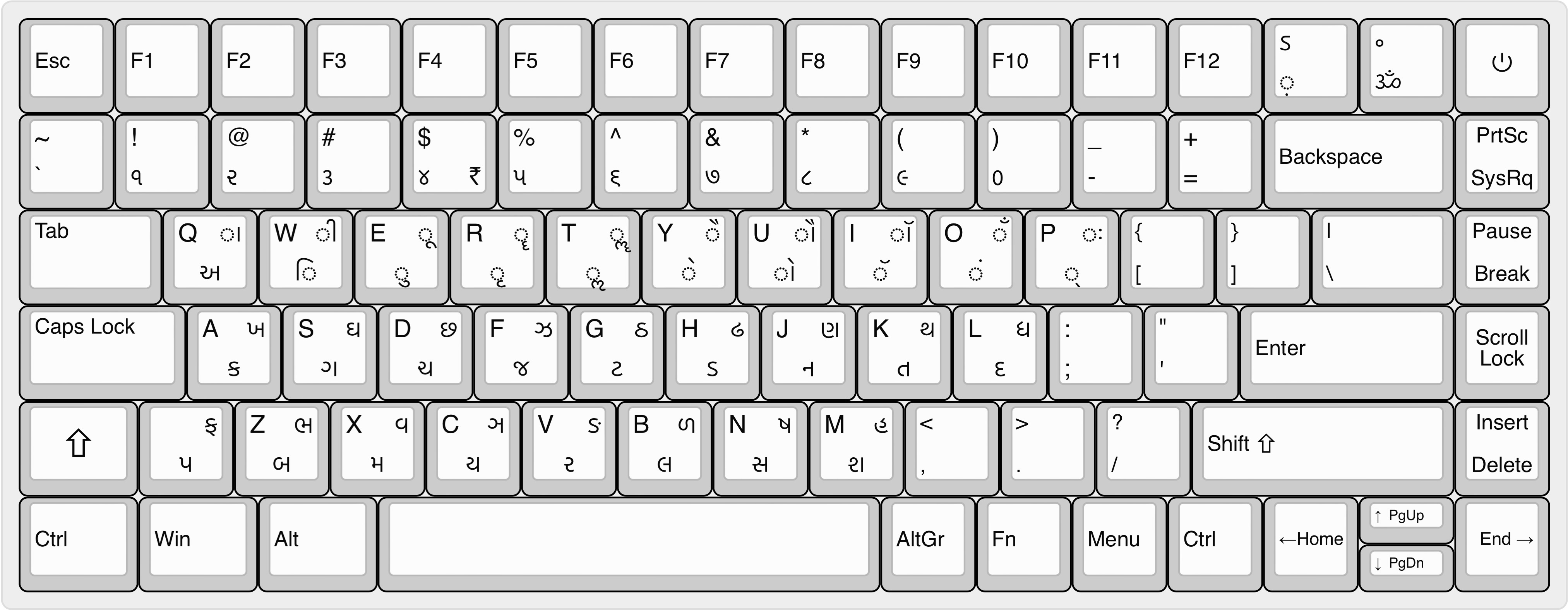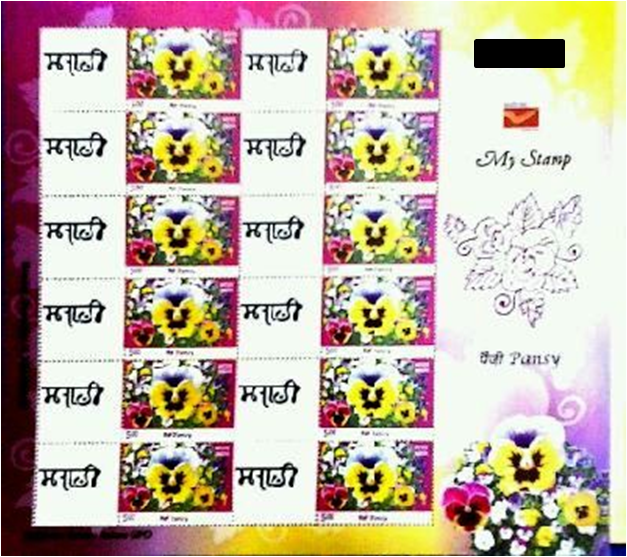|
Gujarati Alphabet
The Gujarati script (, transliterated: ) is an abugida for the Gujarati language, Kutchi language, and various other languages. It is a variant of the Devanagari script differentiated by the loss of the characteristic horizontal line running above the letters and by a number of modifications to some characters. Gujarati numerical digits are also different from their Devanagari counterparts. Origin The Gujarati script () was adapted from the Nagari script to write the Gujarati language. The Gujarati language and script developed in three distinct phases — 10th to 15th century, 15th to 17th century and 17th to 19th century. The first phase is marked by use of Prakrit, Apabramsa and its variants such as Paisaci, Shauraseni, Magadhi and Maharashtri. In second phase, Old Gujarati script was in wide use. The earliest known document in the Old Gujarati script is a handwritten manuscript ''Adi Parva'' dating from 1591–92, and the script first appeared in print in a 1797 advertisem ... [...More Info...] [...Related Items...] OR: [Wikipedia] [Google] [Baidu] |
Gujarati Language
Gujarati (; gu, ગુજરાતી, Gujarātī, translit-std=ISO, label=Gujarati script, ) is an Indo-Aryan language native to the Indian state of Gujarat and spoken predominantly by the Gujarati people. Gujarati is descended from Old Gujarati (). In India, it is one of the 22 scheduled languages of the Union. It is also the official language in the state of Gujarat, as well as an official language in the union territory of Dadra and Nagar Haveli and Daman and Diu. As of 2011, Gujarati is the 6th most widely spoken language in India by number of native speakers, spoken by 55.5 million speakers which amounts to about 4.5% of the total Indian population. It is the 26th most widely spoken language in the world by number of native speakers as of 2007.Mikael Parkvall, "Världens 100 största språk 2007" (The World's 100 Largest Languages in 2007), in ''Nationalencyklopedin''. Asterisks mark th2010 estimatesfor the top dozen languages. Outside of Gujarat, Gujarati is ... [...More Info...] [...Related Items...] OR: [Wikipedia] [Google] [Baidu] |
Gupta Script
The Gupta script (sometimes referred to as Gupta Brahmi script or Late Brahmi script)Sharma, Ram. '' 'Brahmi Script' ''. Delhi: BR Publishing Corp, 2002 was used for writing Sanskrit and is associated with the Gupta Empire of the Indian subcontinent, which was a period of material prosperity and great religious and scientific developments. The Gupta script was descended from Brāhmī and gave rise to the Nāgarī, Śāradā and Siddhaṃ scripts. These scripts in turn gave rise to many of the most important scripts of India, including Devanāgarī (the most common script used for writing Sanskrit since the 19th century), the Gurmukhī script for Punjabi, the Bengali-Assamese script and the Tibetan script. Origins and classification The Gupta script was descended from the Ashokan Brāhmī script, and is a crucial link between Brahmi and most other Brahmic scripts, a family of alphasyllabaries or abugidas. This means that while only consonantal phonemes have distinct symbol ... [...More Info...] [...Related Items...] OR: [Wikipedia] [Google] [Baidu] |
Shauraseni
Shauraseni Prakrit (, ) was a Middle Indo-Aryan language and a Dramatic Prakrit. Shauraseni was the chief language used in drama in northern medieval India. Most of the material in this language originates from the 3rd to 10th centuries, though it was probably a spoken vernacular around the 2nd century BCE in the ancient state of Surasena. Among the Prakrits, Shauraseni is said to be the one most closely related to Classical Sanskrit in that it "is derived from the Old Indian Indo-Aryan dialect of the Madhyadeśa on which Classical Sanskrit was mainly based." Its descendants include the languages of the Hindi Belt, the Central Zone of modern Indo-Aryan or Hindi languages, the standard registers of the Hindustani language based on the Delhi dialect. See also *Saurashtra language *Apabhraṃśa *Prakrit The Prakrits (; sa, prākṛta; psu, 𑀧𑀸𑀉𑀤, ; pka, ) are a group of vernacular Middle Indo-Aryan languages that were used in the Indian subcontinent from arou ... [...More Info...] [...Related Items...] OR: [Wikipedia] [Google] [Baidu] |
Paisaci
Paishachi or Paisaci () is a largely unattested literary language of the middle kingdoms of India mentioned in Prakrit and Sanskrit grammars of antiquity. It is generally grouped with the Prakrits, with which it shares some linguistic similarities, but is still not considered a spoken Prakrit by the grammarians because it was purely a literary language, and because of its archaicism. Identity The etymology of the name suggests that it is spoken by piśācas, "ghouls". In works of Sanskrit poetics such as Daṇḍin's ''Kavyadarsha'', it is also known by the name of , an epithet which can be interpreted either as a "dead language" (i.e. with no surviving speakers), or as "a language spoken by the dead" (i.e. ghouls or ghosts), the former interpretation being more realistic and the latter being the more fanciful. Evidence which lends support to the former interpretation is that literature in Paiśācī is fragmentary and extremely rare but may have been once common. The Siddha-H ... [...More Info...] [...Related Items...] OR: [Wikipedia] [Google] [Baidu] |
Prakrit
The Prakrits (; sa, prākṛta; psu, 𑀧𑀸𑀉𑀤, ; pka, ) are a group of vernacular Middle Indo-Aryan languages that were used in the Indian subcontinent from around the 3rd century BCE to the 8th century CE. The term Prakrit is usually applied to the middle period of Middle Indo-Aryan languages, excluding earlier inscriptions and the later Pali. ''Prākṛta'' literally means "natural", as opposed to ''saṃskṛta'', which literally means "constructed" or "refined". Prakrits were considered the regional spoken (informal) languages of people, and Sanskrit was considered the standardized (formal) language used for literary, official and religious purposes across Indian kingdoms of the subcontinent. Literary registers of Prakrits were also used contemporaneously (predominantly by śramaṇa traditions) alongside Classical Sanskrit of higher social classes. Etymology The dictionary of Monier Monier-Williams (1819–1899), and other modern authors however, interpret ... [...More Info...] [...Related Items...] OR: [Wikipedia] [Google] [Baidu] |
Nagari Script
Nagari may refer to: Writing systems * Nāgarī script, a script used in India during the first millennium * Devanagari, a script used since the late first millennium and currently in widespread use for the languages of northern India * Nandinagari, a script used in southern India from the late first millennium until the 19th century * Sylheti Nagari, a script used in the Sylhet area of Bangladesh and nearby parts of India Places * Nagari, Andhra Pradesh, a town in India ** Nagari (Assembly constituency) * Nagari, Rajasthan, a village in India Other uses * Nagari (surname) * Nagari (settlement), an administrative unit in parts of Sumatra, Indonesia *Bolwell Nagari, a sports car produced in Australia by Bolwell * Nagari, a clan of the Gujjar / Gurjar ethnic group See also * Nagar (other) Nagar (-nagar) can refer to: Places Bangladesh * Nagar, Rajshahi Division, a village * Nagar, Barisal Division, a settlement India * Nagar taluka, Ahmednagar, Maharashtra State * N ... [...More Info...] [...Related Items...] OR: [Wikipedia] [Google] [Baidu] |
Numerical Digit
A numerical digit (often shortened to just digit) is a single symbol used alone (such as "2") or in combinations (such as "25"), to represent numbers in a positional numeral system. The name "digit" comes from the fact that the ten digits (Latin ''digiti'' meaning fingers) of the hands correspond to the ten symbols of the common base 10 numeral system, i.e. the decimal (ancient Latin adjective ''decem'' meaning ten) digits. For a given numeral system with an integer base, the number of different digits required is given by the absolute value of the base. For example, the decimal system (base 10) requires ten digits (0 through to 9), whereas the binary system (base 2) requires two digits (0 and 1). Overview In a basic digital system, a numeral is a sequence of digits, which may be of arbitrary length. Each position in the sequence has a place value, and each digit has a value. The value of the numeral is computed by multiplying each digit in the sequence by its ... [...More Info...] [...Related Items...] OR: [Wikipedia] [Google] [Baidu] |
Abugida
An abugida (, from Ge'ez language, Ge'ez: ), sometimes known as alphasyllabary, neosyllabary or pseudo-alphabet, is a segmental Writing systems#Segmental writing system, writing system in which consonant-vowel sequences are written as units; each unit is based on a consonant letter, and vowel notation is secondary. This contrasts with a full alphabet, in which vowels have status equal to consonants, and with an abjad, in which vowel marking is absent, Abjad#Impure abjads, partial, or optional (although in less formal contexts, all three types of script may be termed alphabets). The terms also contrast them with a syllabary, in which the symbols cannot be split into separate consonants and vowels. Related concepts were introduced independently in 1948 by James Germain Février (using the term ) and David Diringer (using the term ''semisyllabary''), then in 1959 by Fred Householder (introducing the term ''pseudo-alphabet''). The Ethiopian Semitic languages, Ethiopic term "abugi ... [...More Info...] [...Related Items...] OR: [Wikipedia] [Google] [Baidu] |
Nandinagari
Nandinagari is a Brahmic script derived from the Nāgarī script which appeared in the 7th century AD.George Cardona and Danesh Jain (2003), The Indo-Aryan Languages, Routledge, , page 75 This script and its variants were used in the central Deccan region and south India, and an abundance of Sanskrit manuscripts in Nandinagari have been discovered but remain untransliterated.Reinhold Grünendahl (2001), South Indian Scripts in Sanskrit Manuscripts and Prints, Otto Harrassowitz Verlag, , pages xxii, 201-210P. Visalakshy (2003), The Fundamentals of Manuscriptology, Dravidian Linguistics Association, , pages 55-62 Some of the discovered manuscripts of Madhvacharya of the Dvaita Vedanta school of Hinduism are in Nandinagari script. It is a sister script to Devanāgarī, which is common in other parts of India.Pandey, Anshuman. (2013)''Preliminary Proposal to Encode Nandinagari in ISO/IEC 10646''./ref> Etymology Nagari comes from नगर (nagara), which means city. Nandinagar scri ... [...More Info...] [...Related Items...] OR: [Wikipedia] [Google] [Baidu] |
Kaithi
Kaithi (), also called Kayathi () or Kayasthi (), is a historical Brahmic script that was used widely in parts of Northern and Eastern India, primarily in the present-day states of Uttar Pradesh, Jharkhand and Bihar. In particular, it was used for writing legal, administrative and private records. It was used for a variety of Indo-Aryan languages, including Angika, Bajjika, Awadhi, Bhojpuri, Hindustani, Magahi, Maithili, and Nagpuri. Etymology Kaithi script derives its name from the word Kayastha, a social group of India that traditionally consists of administrators and accountants. The Kayastha community was closely associated with the princely courts and British colonial governments of North India and were employed by them to write and maintain records of revenue transactions, legal documents and title deeds; general correspondence and proceedings of the royal courts and related bodies. The script used by them acquired the name ''Kaithi''. History Documents in ... [...More Info...] [...Related Items...] OR: [Wikipedia] [Google] [Baidu] |
Modi Script
Modi ( mr, मोडी, , ; also Mudiya) is a script used to write the Marathi language, which is the primary language spoken in the state of Maharashtra, India. There are multiple theories concerning its origin. The Modi script was used alongside the Devanagari script to write Marathi until the 20th century when the Balbodh style of the Devanagari script was promoted as the standard writing system for Marathi. Etymology The name 'Modi' perhaps derives from the Marathi verb ''moḍaṇe'' (Marathi: मोडणे), which means "to bend or break". Modi is believed to be derived from broken Devanagari characters, which lends support to that particular etymology. It is not to be confused with the name Modi. Origin theories Hemāḍpant origin theory Hemāḍpant was a minister during the reign of Mahadeva (ruled 1261–1271) and the initial years of the reign of Rāmachandra (ruled 1271 to 1309) of the Yadava Dynasty. Creation subtheory Hemāḍpant created the Mo ... [...More Info...] [...Related Items...] OR: [Wikipedia] [Google] [Baidu] |




